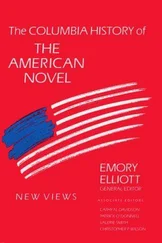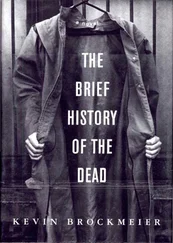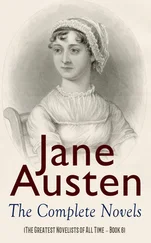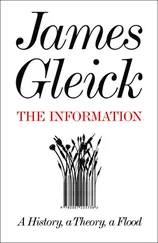Many of the vices attributed to the novel are also characteristics of the market: both breed imitation, gratify desire, and are oblivious to their moral effects. The market appears as a machine evidencing an uncanny automatism. Once they had become "the thing," nothing could stop novels on the market. In critiquing novels, cultural critics deplored the market's powerful, autonomous effect upon culture. Coventry's description of the imitations provoked by the success of Fielding's novels develops a general rule about success and emulation in a market-driven culture: "It is very certain, that whenever any thing new, of what kind soever, is started by one man, and appears with great success in the world, it quickly produces several in the same taste." Producers for the market have become mere factors of the market. Using the by now clichéd terms for describing the Grub Street hacks, Clara Reeve emphasizes how the accelerating multiplicity of novels complicates her own efforts at the classification and criticism of romances and novels. Rampant production also allows bad imitations to proliferate and engenders new institutions to deliver novels indiscriminately into the hands of every reader: "The press groaned under the weight of Novels, which sprung up like mush -4- rooms every year… [Novels] did but now begin to increase upon us, but ten years more multiplied them tenfold. Every work of merit produced a swarm of imitators, till they became a public evil, and the institution of Circulating libraries, conveyed them in the cheapest manner to every bodies hand." An uncontrolled multiplicity threatens to metastasize culture. For the scholar surveying the production of many ages, the market has the effect of blurring the distinctness and expressive readability of culture. Thus in his History of Fiction (1814) John Dunlop complains that while earlier epochs developed "only one species of fiction," which could then be read as «characteristic» of the age, more recently "different kinds have sprung up at once; and thus they were no longer expressive of the taste and feelings of the period of their composition." The critical histories of the novel by Reeve and Dunlop aim to restore the character to culture.
If, according to a formula developed in the writings of the French cultural critic Michel Foucault, power operates less by repressing or censoring than by producing new "reality," new "domains of objects and rituals of truth," then the success of novels on the market changed culture by producing a need to read. Clara Reeve describes this newly incited desire: "People must read something, they cannot always be engaged by dry disquisitions, the mind requires some amusement." Between uncritical surrender to novel reading and a wholesale rejection of novels in favor of «serious» reading, Richardson and Fielding traced a third pathway for the novel. In Reeve's words, the strategy was to "write an antidote to the bad effects" of novels "under the disguise" of being novels. This requires a cunning pharmacology. When Lady Echlin, Richardson's most morally exacting correspondent, warns that "the best instruction you can give, blended with love intrigue, will never answer your good intention," Richardson replies with a celebrated reformulation of the old demand that art should both amuse and instruct: "Instruction, Madam, is the Pill; Amusement is the Gilding. Writings that do not touch the Passions of the Light and Airy, will hardly ever reach the heart." Coventry describes the manner in which Fielding, "who sees all the little movements by which human nature is actuated," intervenes in the market for novels. "The disease became epidemical, but there were no hopes of a cure, 'till Mr. Fielding endeavour'd to show the World, that pure Nature could furnish out as agreeable entertainment, as those airy non-entical forms they had long ador'd, and persuaded the ladies to leave this extravagance to their Abi -5- gails with their cast cloaths." Thus the «disease» of romance, associated with the craze for new fashions, can be «cured» only by cutting new paths toward pleasure. Then the old novels, with their corrupting pleasures, can be passed on, along with old dresses, to the lady's servant.
It is beyond the scope of this chapter to give a detailed account of how the popularity of the «histories» published by Richardson and Fielding in the 1740s effected an upward revaluation of the novel in Britain. However, the key elements of their successful strategy are implicit in the metaphors of the antidote, the vaccine, and the gilded pill. First, a broad spectrum of earlier writings-romances, novellas, and secret histories written on the Continent and in Britain-are characterized as essentially equivalent. Deemed licentious, fantasy-ridden, and debased, they are decried as a cultural disease. Next, Richardson and Fielding produce substitute fictions to absorb the reader. Although Richardson and Fielding wrote antinovels, they didn't write nonnovels. Just as a vaccine can achieve its antidotal function only by introducing a mild form of a disease into the body of the patient, their novels incorporated many elements of the dangerous old novels of Behn, Manley, and Haywood into this "new species" of fiction. By including improving discourse familiar from conduct books, spiritual autobiography, and the periodical essay, the «histories» of Richardson and Fielding could appear radically "new."
Cervantes' Don Quixote (1605 / 1615) and Lafayette's Princess de Cleves (1678) had demonstrated the power of a modern fiction composed on the textual «grounds» of the earlier romance. Those who elevated the novel in England pursued a similar strategy by appropriating elements from the earlier novel-such as the female libertine, or the intricate seduction scheme-and articulating (by connecting together, and thus "speaking") them in a new way, with a new meaning, as part of a new form of novel. Thus, within Richardson's Clarissa, the rake Lovelace, by using disguise and manipulation to pursue seduction, upholds the old novel's ethos of amorous intrigue within the plot lines of the new. The bad old obsession with sex and passion is still there, but through Clarissa's resistance and its attendant critical discourse, sex is sublimated to the virtuous sentiments of the new and improving novel. Incorporated into a new species of novel, the old novel gilds the pill from within, helping to insure the popularity of the new novel. To secure the enlightening cultural address of their novels, Richardson and Fielding disavowed rather than assumed their debt to those popular -6- novels whose narrative resources they incorporated and whose cultural space they sought to occupy. They simultaneously absorbed and erased the novels they would supplant.
The new novel reorients rather than banishes spontaneous reader identification; now a morally improving emulation is promoted. When, in The Progress of Romance, Hortensius complains that Richardson's epistolary novels "have taught many young girls to wiredraw their language, and to spin always long letters out of nothing," Euphrasia defends the cultural value of studying and imitating Richardson over the «studies» of an earlier generation: "Let the young girls… copy Richardson, as often as they please, and it will be owing to the defects of their understandings, or judgments, if they do not improve by him. We could not say as much of the reading Ladies of the last age… No truly, for their studies were the French and Spanish Romances, and the writings of Mrs. Behn, Mrs. Manly, and Mrs. Heywood [sic]." In order to serve as an antidotal substitute for the poison of novels, the elevated novels of Richardson and Fielding had to be founded in an antagonistic critique and overwriting of the earlier novels of Behn, Manley, and Haywood. This elevating novel brought a new disposition of pleasure and value to its readers. But the novel's rise is not a spontaneous or organic development. On the contested cultural site of novel reading at mid-century, it is, as the Marxist critic John Frow suggests in a different context, not so much the old that has died, but the new that has killed.
Читать дальше












